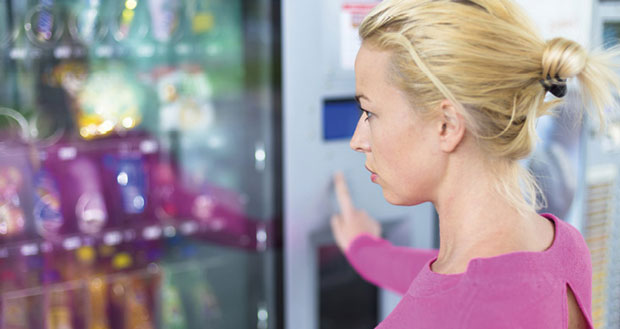The 2024 AVA Census & Market Report published by the AVA: The Vending & Automated Retail Association reveals that the UK vending, coffee services, and automated retail sector has now seen the industry exceed pre-pandemic revenue for the first time.
According to the comprehensive annual study, which draws on industry market data, product revenue rose by over 13 per cent year-on-year, reaching £2.14 billion in 2024. This marks a significant milestone in the sector’s path to recovery and growth following the COVID-19 pandemic. With associated categories included, the total industry value now stands at more than £3 billion.
Other key findings include:
- Fresh food through vending channels has shown impressive growth, with volume increasing by 16 per cent and value by 28 per cent, now representing a £73 million segment.
- Micro markets and Smart Fridges, two of the fastest growing forms of automated retail, also continued their rapid gain in popularity. The number of Micro Markets rose 11 per cent to 730 sites and the number of Smart Fridges surged by 56 per cent to 1,920 units
- Cashless payment technologies continue to dominate across UK vending machines, with 90 per cent of pay vend machines now enabled for cashless transactions. Of these, 80 per cent of transactions are now completed via cashless methods, and 57 per cent of those via mobile payment.
- Cashless transaction values are more than 90 per cent higher than those completed with cash
David Llewellyn, Chief Executive of the AVA said: “Surpassing pre-Covid revenue levels is a tremendous industry-wide achievement and reflects five years of hard graft, dedication, and resilience from AVA members and operators across the UK. Despite ongoing economic challenges and changing workplace behaviours, vending and automated retail businesses have consistently adapted to shifting demand and continued to invest in technology and innovation.”
Other key themes to emerge from the 2024 census includes:
- Coffee-to-Go remains a significant growth area, with wider product ranges and greater consumer choice now available than ever before. Brands have expanded offerings to include iced drinks, enhanced tea selections, and flavoured options.
- Semi-automatic tabletop hot drinks machines are increasing in number, particularly those equipped with liquid milk modules, highlighting consumer preference for higher-quality beverage options.
- While usage in traditional Business & Industry (B&I) sites has declined, growth in hospitality, retail, and transport locations, as well as the rise of unattended retail options like Smart Fridges, is enabling operators to diversify and balance shifting location-based demand.
Llewellyn added: “Our 2024 Census reinforces the dynamic nature of vending and automated retail, underpinned by innovation, data, and customer-centric evolution. As an association, we’ll continue to support our members with insight, advocacy, and tools to remain competitive in the face of ongoing challenges, including regulatory complexity, a tightening economic outlook and rising costs.
“These factors, combined with legislative uncertainty, mean maintaining agility and informed strategy will be more important than ever as we move through 2025 and beyond.”
The report, compiled by Colston Consultants, includes data from over 150,000 machines, covering over a third of the UK’s total machine base.
For more information on the AVA and access to the 2024 Census Report, visit: https://www.the-ava.com/.
Workplace management solutions provider, Matrix Booking, has published a new free guide on how to create workspaces that meet the demands of the current and future workforce.
For those businesses looking to encourage more employees into the office, or wanting to improve their experience overall, ‘How facilities and workplace managers can shape the office of the future’ provides insights and the tools you need to ensure your environment meets the changing nature of employee preferences, employer requests, and evolving styles of work.
To download the guide click here.





